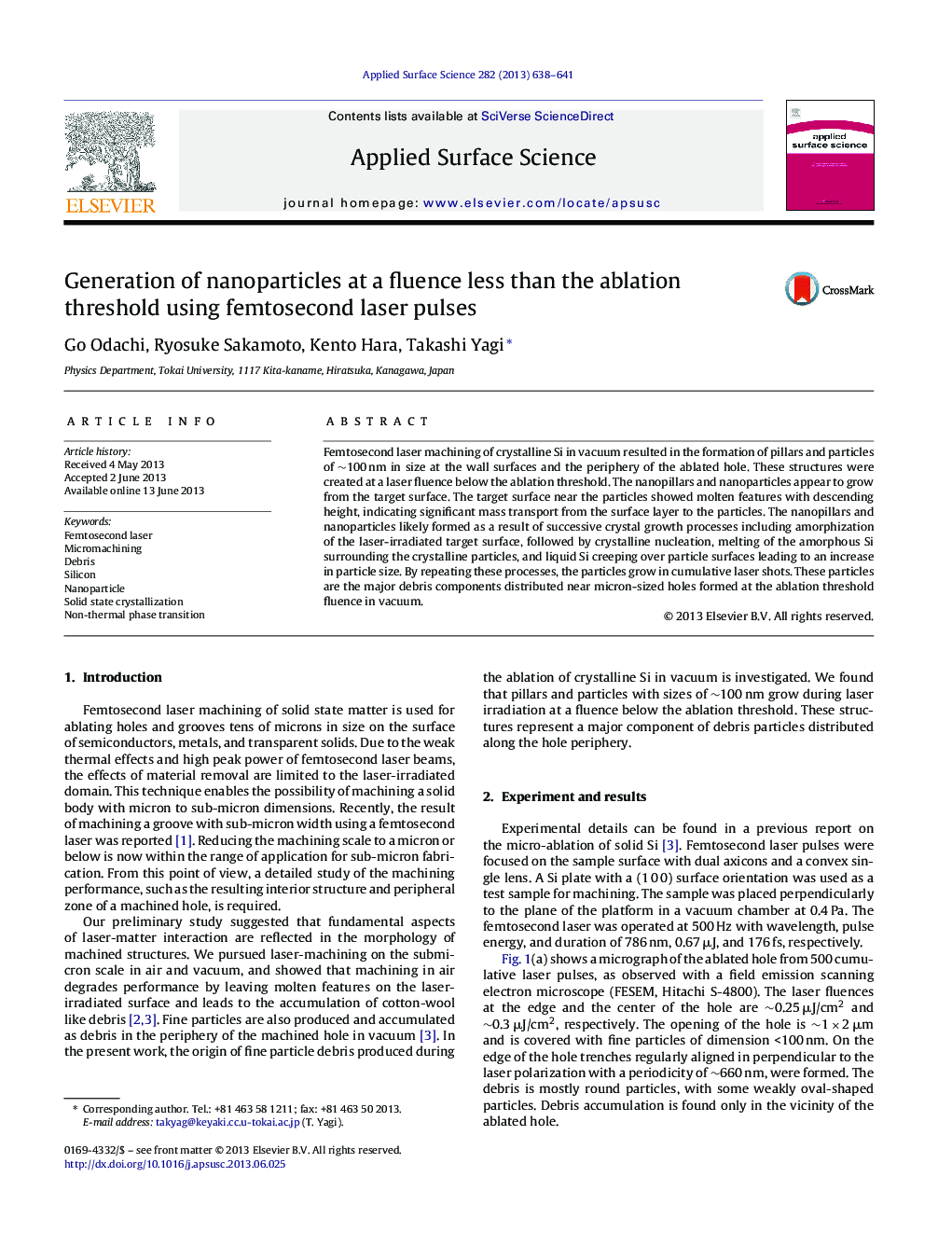| Article ID | Journal | Published Year | Pages | File Type |
|---|---|---|---|---|
| 5359753 | Applied Surface Science | 2013 | 4 Pages |
Abstract
Femtosecond laser machining of crystalline Si in vacuum resulted in the formation of pillars and particles of â¼100Â nm in size at the wall surfaces and the periphery of the ablated hole. These structures were created at a laser fluence below the ablation threshold. The nanopillars and nanoparticles appear to grow from the target surface. The target surface near the particles showed molten features with descending height, indicating significant mass transport from the surface layer to the particles. The nanopillars and nanoparticles likely formed as a result of successive crystal growth processes including amorphization of the laser-irradiated target surface, followed by crystalline nucleation, melting of the amorphous Si surrounding the crystalline particles, and liquid Si creeping over particle surfaces leading to an increase in particle size. By repeating these processes, the particles grow in cumulative laser shots. These particles are the major debris components distributed near micron-sized holes formed at the ablation threshold fluence in vacuum.
Related Topics
Physical Sciences and Engineering
Chemistry
Physical and Theoretical Chemistry
Authors
Go Odachi, Ryosuke Sakamoto, Kento Hara, Takashi Yagi,
